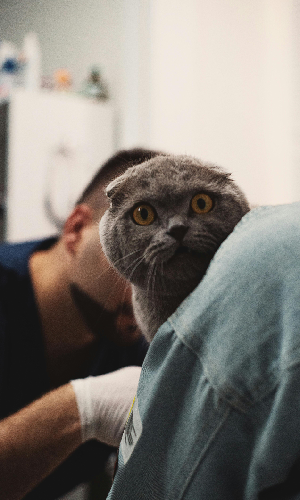As devoted cat parents, we all want our feline friends to live their best, healthiest lives. However, one common issue that can affect even the most well-cared-for cats is intestinal parasites, or more simply put, worms. Don’t worry though! With the right knowledge and tools like Profender for Cats, we can keep our furry companions happy, healthy, and worm-free. In this comprehensive guide, we’ll explore everything you need to know about cat worms and how Profender for Cats can help.
Understanding Cat Worms: Types and Symptoms
Before we dive into treatment options, it’s crucial to understand the different types of worms that can affect our feline friends and how to spot the signs of infestation.
Common Types of Worms in Cats:
- Roundworms: These are the most common intestinal parasites in cats. They resemble spaghetti noodles and are usually 2-4 inches (5-10 cm) long.
- Tapeworms: These flat, segmented worms can grow quite long. You might spot tapeworm segments (which look like grains of rice) around your cat’s rear end or in their feces.
- Hookworms: These tiny worms attach to the intestinal lining and feed on blood. They’re too small to see with the naked eye.
- Lungworms: As the name suggests, these parasites infect the lungs and can cause respiratory issues.
- Heartworms: While less common in cats than in dogs, heartworms can be fatal if left untreated.
Spotting the Signs: Symptoms of Worm Infestation
Knowing what to look for can help you catch a worm infestation early. Here are some common symptoms:
- Diarrhea or loose stools
- Vomiting (sometimes with visible worms)
- Weight loss despite a good appetite
- A bloated or pot-bellied appearance
- Pale gums
- Dull or matted coat
- Visible worms or worm segments in feces or around the anus
- Lethargy or weakness
- Coughing (in the case of lungworms or heartworms)
Remember, some cats may not show obvious symptoms, which is why regular vet check-ups are so important!
The Importance of Veterinary Care
While it’s helpful to be aware of the signs of worm infestation, nothing replaces professional veterinary care. If you suspect your cat has worms, it’s crucial to schedule an appointment with your vet right away. They can perform the necessary tests to determine exactly what type of parasites are present and recommend the most effective treatment plan.
Your vet may ask you to bring in a fresh stool sample for examination. They might also perform blood tests or other diagnostic procedures to get a complete picture of your cat’s health.
Introducing Profender for Cats: A Revolutionary Treatment
Now that we understand the problem, let’s talk about a solution that’s changing the game in feline parasite control: Profender for Cats.
What is Profender for Cats?
Profender for Cats is a topical treatment designed to combat a wide range of intestinal parasites in cats. It’s particularly effective against:
- Roundworms
- Hookworms
- Tapeworms
- Lungworms
One of the most significant advantages of Profender for Cats is that a single application is usually sufficient to kill and prevent infestations from various types of intestinal worms. This makes it a convenient and efficient option for busy cat parents.
How Does Profender for Cats Work?
Profender for Cats comes in a spot-on formulation. This means it’s applied directly to your cat’s skin, where it’s absorbed and distributed throughout their body. The active ingredients then work to eliminate existing parasites and prevent new infestations.
The application process is simple:
- Remove the cap from the tube.
- Turn the cap upside down and place it back on the tube.
- Twist to break the seal.
- Part your cat’s fur at the base of the neck, where they can’t reach to lick.
- Apply the entire contents of the tube directly to the skin.
- Gently massage the area to ensure even distribution.
It’s important to apply Profender for Cats to an area where your cat can’t lick it off. This ensures that they receive the full dose and prevents any potential side effects from oral ingestion.
Why Choose Profender for Cats?
There are several reasons why Profender for Cats has become a popular choice among veterinarians and cat owners:
- Broad-spectrum protection: It targets multiple types of worms with a single application.
- Easy application: The spot-on formula is much easier to administer than oral medications, especially for cats who resist taking pills.
- Fast-acting: Profender starts working quickly to eliminate parasites.
- Safe for cats: When used as directed, Profender is safe for cats over 8 weeks old and weighing at least 2.2 pounds (1 kg).
- No prescription needed: In many areas, Profender is available over the counter, making it easily accessible for cat owners.
Preventing Worm Infestations: Beyond Treatment
While Profender for Cats is an excellent tool for treating and preventing worm infestations, there are additional steps you can take to keep your feline friend parasite-free:
- Regular vet check-ups: Annual or bi-annual wellness exams can catch potential issues early.
- Proper hygiene: Clean your cat’s litter box daily and wash your hands after handling.
- Flea prevention: Since fleas can transmit tapeworms, keeping your cat flea-free is crucial.
- Indoor living: Indoor cats are less likely to contract worms than outdoor cats.
- Clean environment: Regularly clean areas where your cat spends time, including bedding and favorite lounging spots.
- Fresh, clean water: Always provide your cat with clean drinking water to prevent the ingestion of parasites.
- High-quality diet: A nutritious diet can help boost your cat’s immune system, making them more resistant to parasites.
Frequently Asked Questions About Profender for Cats
To help you make an informed decision about using Profender for Cats, here are answers to some common questions:
- Q: How often should I use Profender for Cats? A: Follow your veterinarian’s recommendations. Typically, it’s used every 3-4 months for prevention, but may be used more frequently if an active infestation is present.
- Q: Can I use Profender for Cats on kittens? A: Profender is safe for cats over 8 weeks old and weighing at least 2.2 pounds (1 kg). Always consult with your vet before using any parasite treatment on young kittens.
- Q: Are there any side effects of Profender for Cats? A: Side effects are rare but may include temporary hair loss at the application site, mild skin irritation, or gastrointestinal upset if ingested. If you notice any unusual symptoms after application, contact your vet.
- Q: Can I bathe my cat after applying Profender? A: It’s best to wait at least 24 hours after application before bathing your cat or allowing them to get wet.
- Q: Is Profender for Cats safe for pregnant or nursing cats? A: Always consult with your veterinarian before using any medication on pregnant or nursing cats.
Conclusion: A Healthy Cat is a Happy Cat
Dealing with worms in our feline friends can be distressing, but with products like Profender for Cats and proper preventive care, we can keep our cats healthy and parasite-free. Remember, regular vet check-ups, good hygiene practices, and a watchful eye for symptoms are all crucial components of responsible cat ownership.
By staying informed and proactive, we can ensure our beloved cats live their best lives, free from the discomfort and health risks associated with intestinal parasites. After all, a healthy cat is a happy cat, and there’s nothing better than the purrs and cuddles of a content feline companion!
So, next time you’re considering your cat’s health care routine, remember Profender for Cats – a simple solution for a common problem, helping to keep your furry friend happy, healthy, and worm-free!


